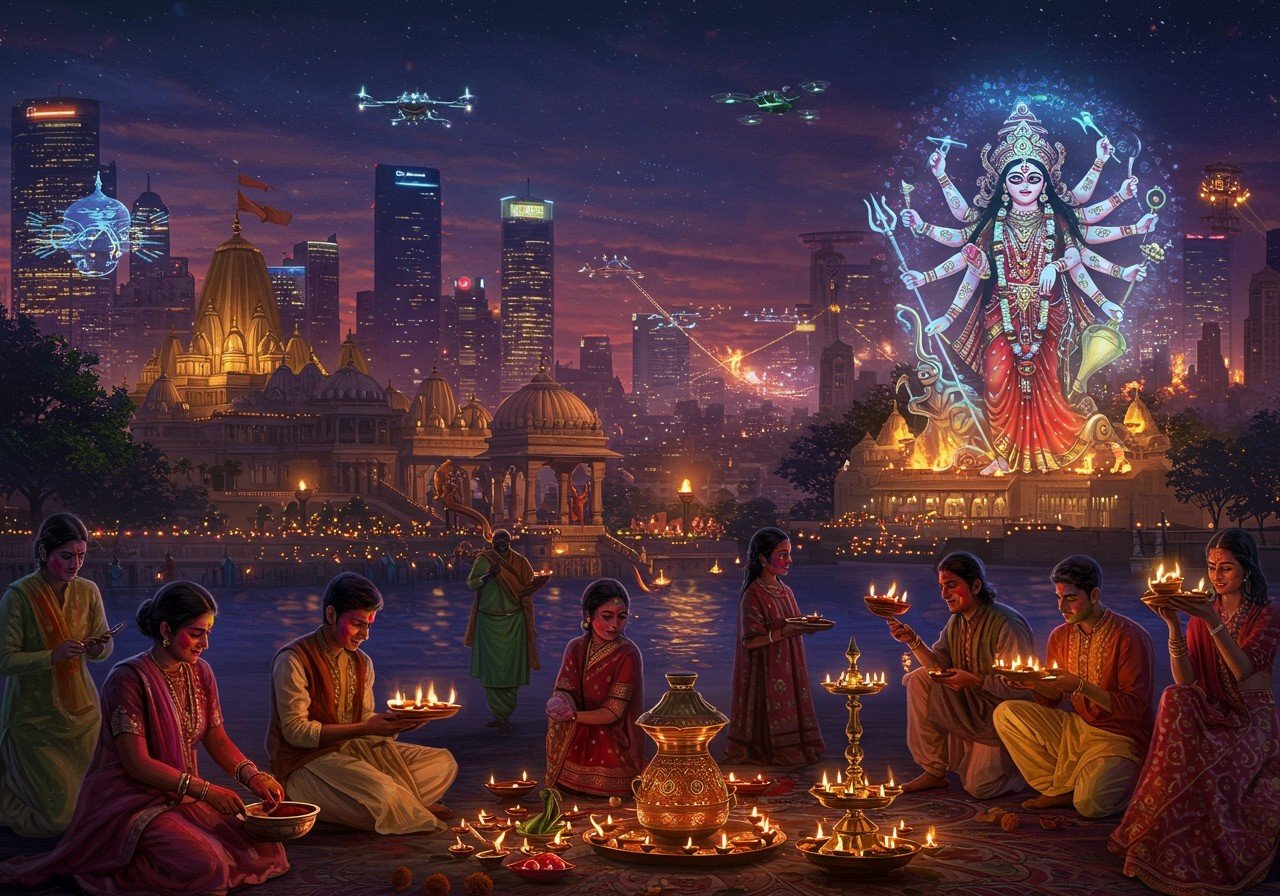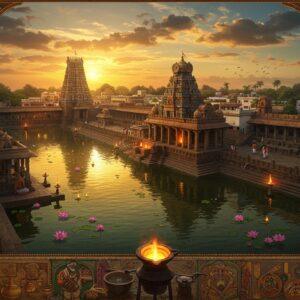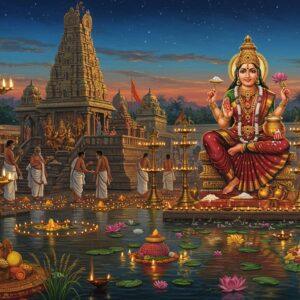
India, a land of vibrant cultures and diverse traditions, is renowned for its spectacular festivals. As we approach 2025, the festive landscape promises to be even more colorful and captivating. This article delves into the rich tapestry of Indian festivals, exploring their significance, dates, and integral role in the nation’s cultural fabric. In today’s digital age, conveniently access traditional items for these celebrations online, preserving authenticity with ease.
Hindu Festivals in 2025
Hinduism, the major religion in India, boasts a multitude of festivals throughout the year. Diwali, the festival of lights, symbolizes the triumph of good over evil and is observed with elaborate rituals, fireworks displays and the lighting of diyas. Holi, the festival of colors, heralds the arrival of spring, celebrated with vibrant hues and joyous music. Navratri, a nine-night festival, honors the goddess Durga, featuring fasting, traditional dances, and devotional songs.
The 2025 dates for these festivals are guided by the lunar calendar. Diwali is expected around late October/early November, Holi typically in March, and Navratri in September or October. Regional variations add unique customs and traditions. For instance, in West Bengal, Durga Puja during Navratri involves grand pandals and impressive idol processions.
You can discover a wide range of products for your Diwali, Holi, and Navratri celebrations at poojn.in. We offer everything from diyas and rangolis to puja kits and festive decorations.
Muslim Festivals in 2025
Islam, the second largest religion in India, enriches the country’s festival scene. Eid al-Fitr, concluding Ramadan, is a period of feasting and charitable giving. Eid al-Adha, the Festival of Sacrifice, commemorates Ibrahim’s willingness to sacrifice his son. Muharram, the Islamic New Year, is a time of mourning and remembrance.
The Islamic lunar calendar influences the anticipated 2025 dates for these festivals. Eid al-Fitr may fall in April or May, while Eid al-Adha is likely around July or August. Cultural practices include communal prayers, fasting, and acts of charity. Families unite for special meals and share food with those in need.
Christian Festivals in 2025
Christianity, with a substantial presence in India, adds to the festival diversity. Christmas, celebrating Jesus Christ’s birth, involves midnight masses, feasts, and gift-giving. Easter commemorates Jesus’ resurrection with special church services and festive meals. Communities gather for rejoicing and reflection.
Christmas in 2025 will be celebrated with distinct customs across regions. Goa, for instance, is known for its Christmas crib competitions. Easter falls on March 30th, filling churches with hymns and prayers.
Sikh Festivals in 2025
Sikhism, prominently practiced in Punjab, celebrates vibrant festivals. Vaisakhi, the Sikh New Year and Khalsa’s formation anniversary, features processions and community feasts. The celebrations reflect unity and gratitude for the harvest.
Guru Nanak Jayanti honors Guru Nanak’s birth anniversary. Devotees engage in prayers, hymns, and community service. These festivals emphasize langar, the community kitchen, symbolizing equality and selfless service.
Find a variety of religious items for your Sikh celebrations at poojn.in. We offer a curated selection of products to enhance your spiritual practices.
Other Cultural Festivals in 2025
India’s cultural festivals mirror its rich heritage. Pongal, a Tamil harvest festival, honors the Sun God. Families cook the new harvest and share the joy and abundance.
Onam, Kerala’s harvest festival, is marked by elaborate feasts and traditional games. Communities celebrate with enthusiasm, embodying regional pride. Boat races, floral carpets (pookalam) and traditional dance performances.
Bihu, from Assam, signifies the Assamese New Year. Music and dance bring people together in celebrating life and nature’s bounty. People wear their traditional attires and perform traditional dances.
The Role of Digitalization in Celebrating Festivals
Technology is transforming festival celebrations in India. Traditional ritual items are readily available online, offering convenience to urban families. Virtual celebrations and online gatherings are gaining popularity.
Social media expands awareness, connecting individuals across distances. Balancing tradition with modern conveniences becomes crucial. Digital platforms offer innovative ways to celebrate while preserving cultural roots.
India’s Festivals: A Celebration of Unity and Diversity
India’s festivals unite people, celebrating diversity and upholding tradition. In 2025, digitalization enhances these cherished customs, making them accessible to everyone. From online puja samagri purchases to virtual participation, technology enriches the experience while respecting time-honored practices. As we embrace the festivals of 2025, we maintain our traditions while welcoming modern advancements. This harmonious blend ensures the enduring essence of Indian festivals, spreading joy and unity to all.
Explore a wide range of puja essentials and festive items on poojn.in. From incense sticks and diyas to spiritual books and home decor, we have everything you need to celebrate Indian festivals with devotion and joy. Our collection also includes specific items for festivals like Holi, Diwali, Raksha Bandhan, and more. Make your celebrations more meaningful with Falcon Brand Indian Sandal Incense Sticks and other authentic products available on our website.
Frequently Asked Questions about Indian Festivals in 2025
What are some prominent festivals in India during 2025?
2025 offers a rich tapestry of Indian festivals, including Diwali (October 23rd), Holi (March 14th), Eid al-Fitr (likely April/May), Eid al-Adha (likely July/August), Christmas (December 25th), Pongal (January 14th), Navratri (dates vary based on the lunar calendar, likely September/October), and regional festivals such as Baisakhi (April 13th or 14th), Onam (likely August/September), and Durga Puja (dates vary, likely September/October).
What is the significance of Holi?
Holi, the festival of colors, celebrates the arrival of spring and the victory of good over evil. The vibrant colors symbolize joy, love, and the triumph of light over darkness. It’s a time for people to come together, forget their differences, and revel in the spirit of unity and harmony.
Why is Eid important in Indian culture?
Eid al-Fitr and Eid al-Adha are significant Islamic festivals celebrated with great enthusiasm in India. Eid al-Fitr marks the end of Ramadan, the holy month of fasting, while Eid al-Adha commemorates Ibrahim’s willingness to sacrifice his son. Both festivals emphasize prayer, charity, family gatherings, and sharing joy with the community.
How is Pongal celebrated in Southern India?
Pongal, a four-day harvest festival primarily celebrated in Tamil Nadu, is a thanksgiving to the Sun God for a bountiful harvest. People prepare a special dish called Pongal, made from freshly harvested rice, milk, and jaggery, and offer it to the Sun God. Festivities include decorating homes with sugarcane, turmeric plants, and colorful kolams (decorative patterns made with rice flour).
What makes Navratri unique?
Navratri, meaning “nine nights,” is dedicated to the worship of the goddess Durga in her various forms. It’s a time for fasting, devotion, and traditional dances like Garba and Dandiya Raas. Each of the nine nights is associated with a different incarnation of the goddess, symbolizing different aspects of feminine power and divinity.
Prepare for Navratri and other pujas with authentic puja items from poojn.in. We offer a wide selection of high-quality products to make your celebrations more spiritual and fulfilling.


